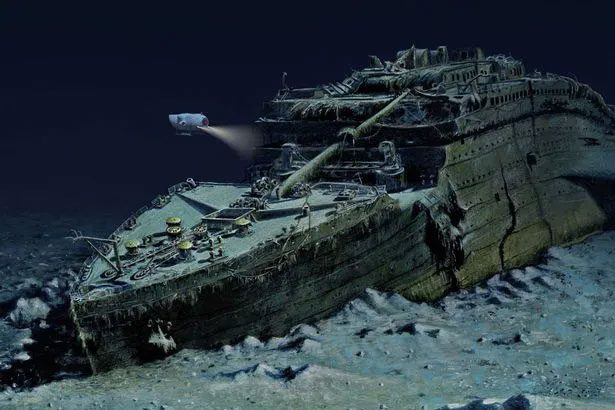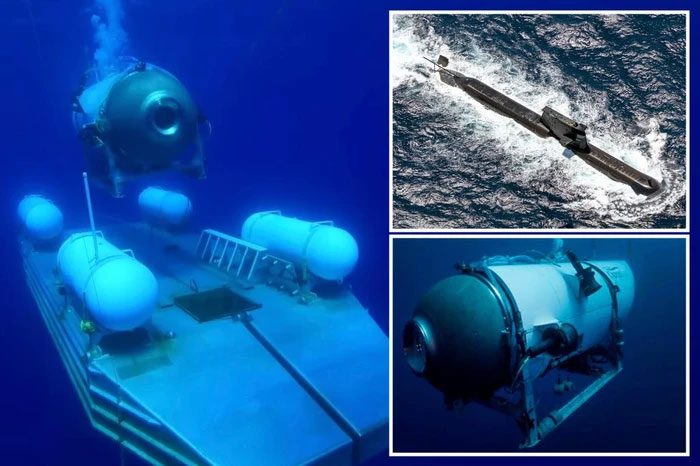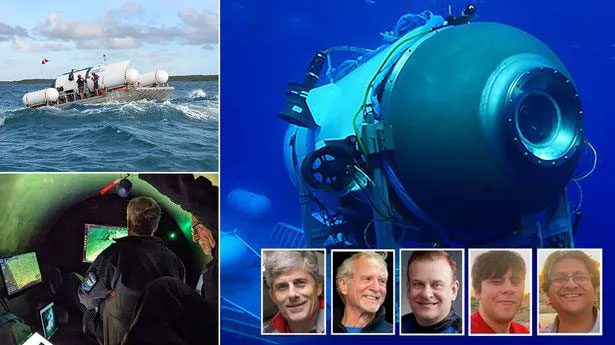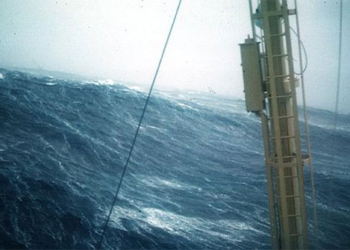The exploration of the ocean’s depths has always captivated human imagination, expanding our understanding and illuminating the secrets of the deep.
However, sometimes these adventures can end in tragedy, as evidenced by the recent news surrounding the crew of the Titanic exploration submarine.
In a complex turn of events, experts suggest that the crew members may be considered deceased due to their oxygen supply running out. Referencing the article titled “3 Scenarios Regarding What Could Happen with the Titanic Submarine” published by Insider – the first scenario posits that the Titan experienced a “catastrophic implosion”; the second scenario suggests the submarine became entangled in the debris of the Titanic; and the final scenario is that the Titan could be floating on the ocean’s surface.

The wreck of the Titanic on the ocean floor.
Former commander Andy Coles stated that the passengers may have succumbed to hypothermia or carbon dioxide poisoning as oxygen became depleted. He told The Mirror: “I don’t think the submarine had any means to fully scrub CO2 and recirculate air. Therefore, they may have fallen asleep before suffocating completely.”
Coles noted that even if the Titan could surface, they would not be able to open the hatch as it was secured with bolts from the outside. Even if the Titan’s location was discovered, bringing it to the surface would present an even greater challenge.
He added: “I can say that there is less than a 50% chance for the crew members to survive, even if you find them.”
The Dire Situation of the Titanic Exploration Submarine Crew
The article published by Insider shed light on the harsh reality that the crew members inside the Titanic exploration submarine faced. As the sub dove deeper into the ocean, it encountered unforeseen challenges, leading to a loss of communication and a rapid depletion of oxygen supply. The crew members would find themselves trapped at great depths, with no way to replenish the life-sustaining oxygen.
The situation faced by the Titanic submarine crew stands as a testament to the inherent risks and complexities associated with deep-sea exploration. Despite advancements in technology and safety measures, the ocean’s harsh and unpredictable nature remains a formidable “adversary” for humanity.

This tragic event serves as a painful reminder of the sacrifices and dangers associated with the pursuit of scientific exploration in the ocean’s abyss.
The depletion of oxygen on the Titan submarine not only posed a serious threat to the survival of the crew members but also underscored the importance of contingency plans, emergency procedures, and robust life support systems for underwater operations.
As underwater exploration continues to push the limits of human capability, ensuring the safety and well-being of crew members must remain a top priority.
Challenges of Deep-Sea Exploration
The article from Insider highlights the complexities and risks associated with deep-sea exploration, particularly in remote and dangerous environments like the ocean’s depths. Venturing to unexplored depths presents numerous challenges, including extreme pressure, low temperatures, and limited access to critical resources. These factors place significant stress on both humans and equipment, making meticulous safety protocols and planning essential for successful underwater missions.
Furthermore, the harsh nature of the deep sea demands constant vigilance and preparation. Unexpected events, such as equipment malfunctions or adverse weather conditions, can quickly escalate into life-threatening situations. The tragedy involving the Titan submarine crew serves as a clear reminder of the inherent risks associated with deep-sea exploration and the necessity for stringent safety measures to mitigate potential hazards.
Deep-sea exploration is a testament to human curiosity and the relentless pursuit of knowledge. However, it requires a delicate balance between pushing the boundaries of scientific understanding and ensuring the safety and welfare of those involved. Ongoing advancements in technology, robust training programs, and thorough risk assessments are essential to mitigate inherent dangers and enhance the resilience of underwater exploration missions.

5 members died on the Titan submarine.
Lessons Learned and Future Prospects
The incident involving the Titan submarine underscores the need for a comprehensive review of safety protocols and emergency response procedures in deep-sea exploration. This tragic event will undoubtedly prompt a thorough investigation to determine the causes and identify areas for improvement.
Through meticulous analysis of the incident, scientists, engineers, and exploration organizations can identify crucial lessons and implement necessary changes to prevent similar tragedies in the future.
In light of this heartbreaking event, it is important to recognize the invaluable contributions of individuals undertaking such bold missions. Their unwavering commitment to scientific exploration has expanded the frontiers of human knowledge and enabled us to uncover the mysteries of the abyss.
However, their sacrifices also highlight the need to continue investing in safety measures, technological advancements, and contingency planning to ensure the safety of those embarking on these ambitious endeavors.
Despite the inherent risks, the future of deep-sea exploration holds great promise. Technological advancements, such as remotely operated vehicles (ROVs) and autonomous underwater vehicles (AUVs), offer alternatives to manned submersibles, reducing the risks associated with human presence in harsh environments. Additionally, ongoing research and innovation in life support systems and communication technology will further enhance the safety and efficiency of underwater exploration activities.
This incident will encourage the scientific community to seriously evaluate safety protocols, enhance technological capabilities, and prioritize the health of those engaged in underwater exploration.





















































